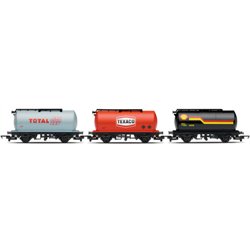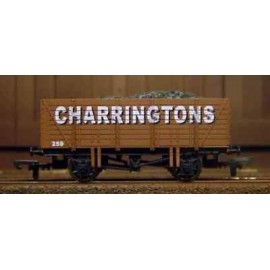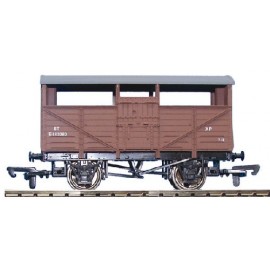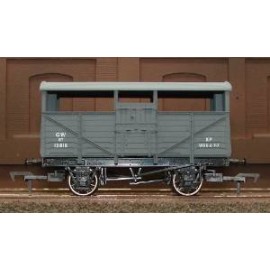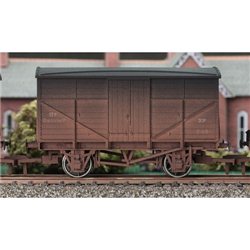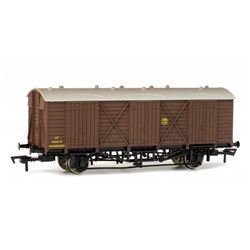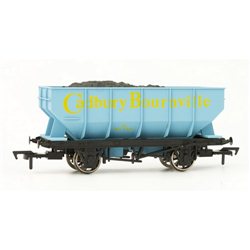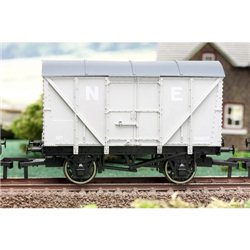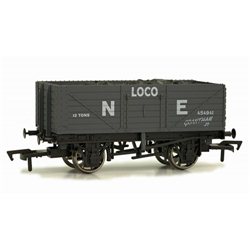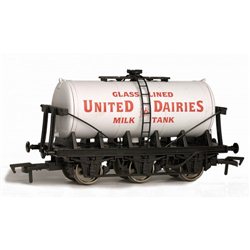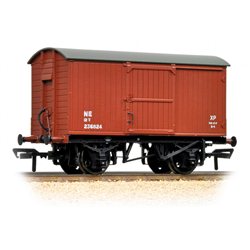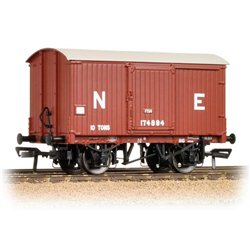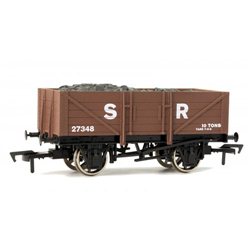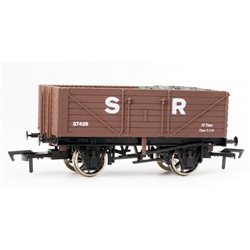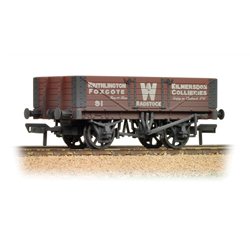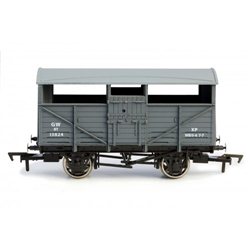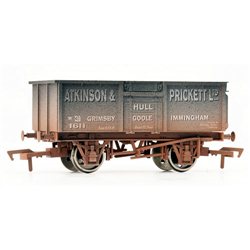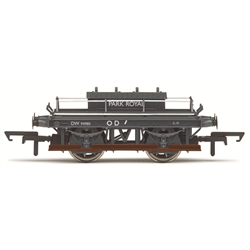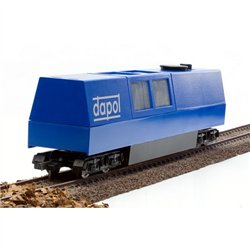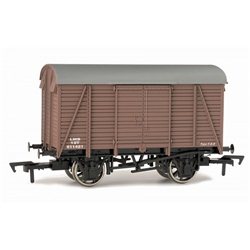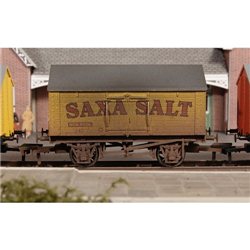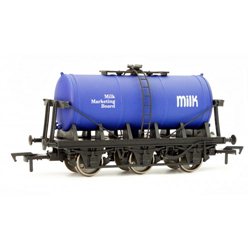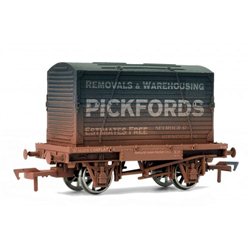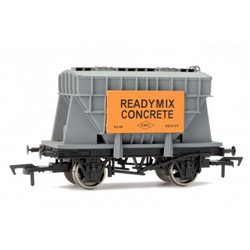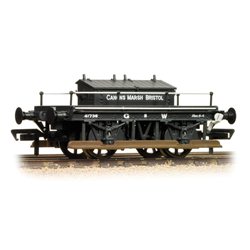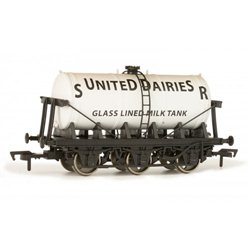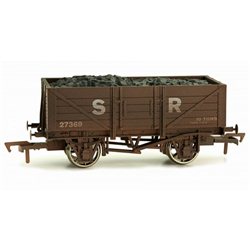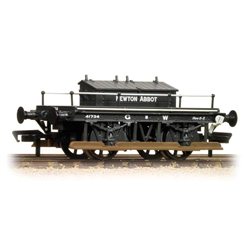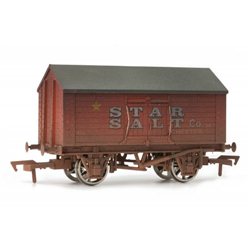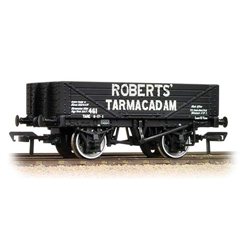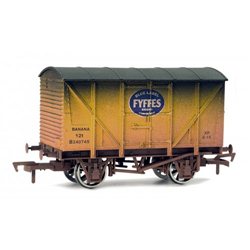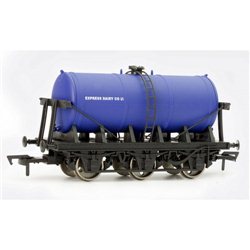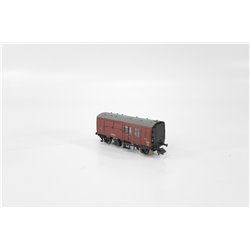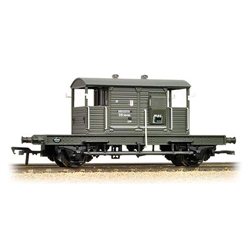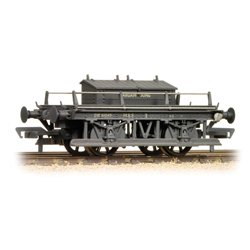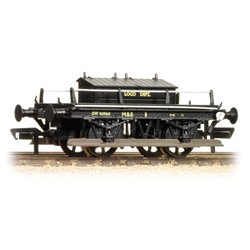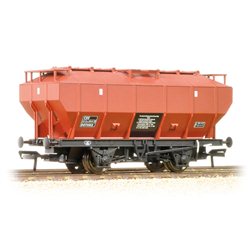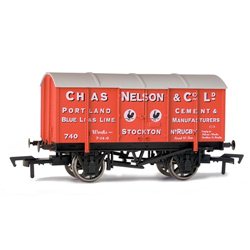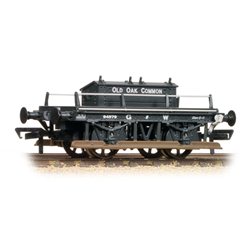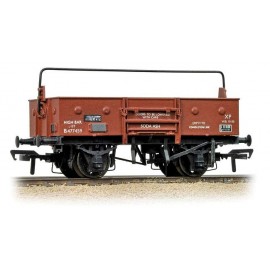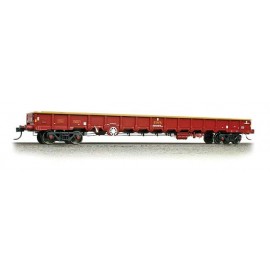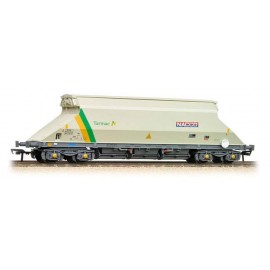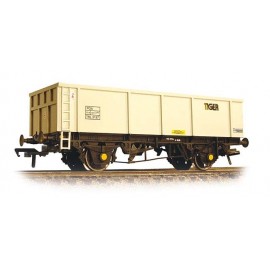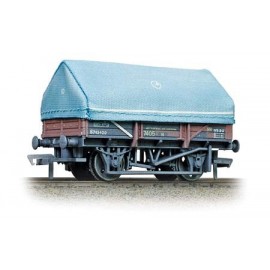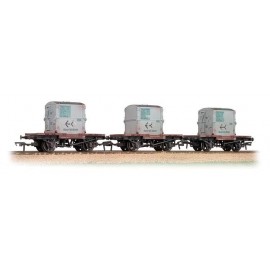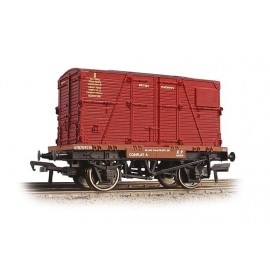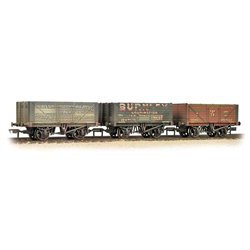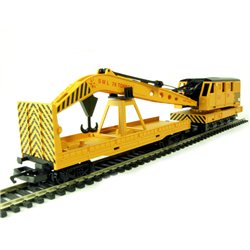Mainline Railways was a British model railway brand that operated between 1976 and 1983, introduced by Palitoy, the...
No products
Product successfully added to your shopping cart
There are 0 items in your cart. There is 1 item in your cart.
Search Tips
Open on Good Friday
The shop will be open on Friday 18th April.
Bring us some chocolate!
Wagons - ready made [OO]There are 651 products.
FUEL TRAIN PK ESSO/ TEXACO/BURMA
R6366
HornbyScale: OO (1/76)FUEL TRAIN PK ESSO/ TEXACO/BURMA
£ 15.50Out of stock9-plank open wagon "Charringtons"
B641
DapolScale: OO (1/76)9-plank open wagon "Charringtons"Coal Wagon No.259 - Brown Livery
£ 10.20Out of stockBR Cattle Wagon 893373
B501A
DapolScale: OO (1/76)BR Cattle Wagon 893373Cattle wagons were made in large numbers and were a common sight on rail in all parts of the country until their use was eclipsed by the use of specialised road vehicles.
£ 10.70Out of stockGWR Cattle Wagon 13818
B500A
DapolScale: OO (1/76)GWR Cattle Wagon 13818Cattle wagons were made in large numbers and were a common sight on rail in all parts of the country until their use was eclipsed by the use of specialised road vehicles.
£ 9.70Out of stockBR Fruit Mex B833347 Weathered
4F-015-004
DapolScale: OO (1/76)After changes in legislation regarding animal welfare and transport, many older style cattle wagons became redundant and alternative uses had to be found.
£ 13.75Out of stockFruit D GWR Shirtbutton 2881
4F-014-001
DapolScale: OO (1/76)Fruit D wagons were large ventilated wooden bodied vans designed for the fast and efficient transportation of fruit.
£ 19.10In stock21 Ton Hopper Cadbury Bournville 156
4F-034-001
DapolScale: OO (1/76)On nationalisation, the newly formed BR inherited a vast assortment of rolling stock designed to carry coal.
£ 11.40Out of stockBanana Van NE 158677
4F-016-005
DapolScale: OO (1/76)To meet the rapid rise in demand for bananas shipped in from the Caribbean, especially constructed steam heated banana vans were manufactured with plywood cladding and insulated bodies that allowed bananas to be shipped in green and ripened en-route.
£ 11.20Out of stock7 Plank Wagon NE Loco Coal
4F-071-017
DapolScale: OO (1/76)The 7 plank wagon was the standard coal wagon up to the 1930’s when steel mineral wagons were developed. In 1923 the RCH produced a standard plan for the 7 plank wagon, as up to this time there were many variations depending on the builder and region. However, even after the standard was applied, many non-standard wagons were still used.
£ 12.25Out of stockUnited Dairies Milk Tanker
4F-031-019
DapolScale: OO (1/76)The 6 wheel milk tanker was developed in the 1930’s from the 4 wheel milk tanker.
£ 15.99Out of stock12 Ton Ventilated Van Planked Ends LNER Oxide
38-375A
BachmannScale: OO (1/76)12 Ton Ventilated Van Planked Ends LNER Oxide
£ 14.95Out of stock5 Plank Wagon 10' Wheelbase SR 27348
4F-051-003
DapolScale: OO (1/76)The 5 Plank Wagon was one of the most common general good wagon built with tens of thousands being manufactured by the rail companies between 1910 and the early 1930’s..
£ 11.10Out of stock7 Plank Wagon SR 37429
4F-071-007
DapolScale: OO (1/76)The 7 plank wagon was the standard coal wagon up to the 1930’s when steel mineral wagons were developed. In 1923 the RCH produced a standard plan for the 7 plank wagon, as up to this time there were many variations depending on the builder and region. However, even after the standard was applied, many non-standard wagons were still used.
£ 10.40Out of stock5 Plank Wagon Wooden Floor 'Writhlington' Weathered
37-065
BachmannScale: OO (1/76)5 Plank Wagon Wooden Floor 'Writhlington' Weathered
£ 14.50Out of stockCattle Wagon GWR 13824
4F-020-003
DapolScale: OO (1/76)Cattle Wagon 13824 GWR Cattle wagons were made in large numbers and were a common sight on rail in all parts of the country until their use was eclipsed by the use of specialised road vehicles.
£ 10.40Out of stock16 Ton Steel Mineral Wagon ATKINSON & PRICKETT Weathered
4F-030-008
DapolScale: OO (1/76)The 16 Ton Steel Mineral Wagon was a product of war time, when the requirement for coal soared and efforts were made to transport it more efficiently.
£ 11.80Out of stockMotorised track cleaner
B800
DapolScale: OO (1/76)Motorised track cleanerThis model needs to be hauled by a locomotive, as 'motorised' merely reflects the motor driving the cleaning heads and not the movement of the model.
£ 90.00In stockLMS Box Van 611421
4F-021-003
DapolScale: OO (1/76)Box Vans were the workhorses of the early freight industry moving general merchandise and perishable goods and thousands were built over several designs and over a large time period.
£ 10.40Out of stockSalt Van Saxa Weathered
4F-018-002
DapolScale: OO (1/76)The efficient movement of salt was fundamental to the growth of Britain as an industrial nation. Salt was transported from the main mining areas in Cheshire, Lancashire, Yorkshire and the West Midlands in especially constructed salt vans.
£ 11.80Out of stock6 Wheel Milk Tank MMB
4F-031-005
DapolScale: OO (1/76)The 6 wheel milk tanker was developed in the 1930’s from the 4 wheel milk tanker.
£ 17.90Out of stockConflat & Container Pickfords Weathered
4F-037-103
DapolScale: OO (1/76)Containers and the special wooden decked conflat wagons used to convey them were produced in great numbers by all four of the railway companies.
£ 16.75Out of stockPresflo Ready Mix Concrete
4F-035-001
DapolScale: OO (1/76)The pressure discharge bulk powder wagon abbreviated to Presflo was developed in 1954 to efficiently transfer and transport cement and other powders.
£ 11.50Out of stockGWR Shunters Truck GWR Grey 'Canons Marsh, Bristol'
38-675
BachmannScale: OO (1/76)GWR Shunters Truck GWR Grey 'Canons Marsh, Bristol'
£ 16.95Out of stock6 wheel milk tanker "SR United Dairies" (ex-B687)
4F-031-001
DapolScale: OO (1/76)6 wheel milk tanker "SR United Dairies" (ex-B687) The 6 wheel milk tanker was developed in the 1930’s from the 4 wheel milk tanker.
£ 17.90Out of stock5 Plank Wagon 10' Wheelbase SR 27369 Weathered
4F-051-012
DapolScale: OO (1/76)The 5 Plank Wagon was one of the most common general good wagon built with tens of thousands being manufactured by the rail companies between 1910 and the early 1930’s..
£ 12.00Out of stockGWR Shunters Truck GWR Grey 'Newton Abbot'
38-676
BachmannScale: OO (1/76)GWR Shunters Truck GWR Grey 'Newton Abbot'
£ 17.95Out of stockSalt Van Star Salt Weathered
4F-018-004
DapolScale: OO (1/76)The efficient movement of salt was fundamental to the growth of Britain as an industrial nation. Salt was transported from the main mining areas in Cheshire, Lancashire, Yorkshire and the West Midlands in especially constructed salt vans.
£ 13.75Out of stock5 Plank Wagon Steel Floor 'Roberts Tarmacadam'
37-037
BachmannScale: OO (1/76)5 Plank Wagon Steel Floor 'Roberts Tarmacadam'
£ 9.00Out of stockBanana Van Fyffes B240745 Weathered
4F-016-101
DapolScale: OO (1/76)Fyffes Banana Van No.B240745 Weathered To meet the rapid rise in demand for bananas shipped in from the Caribbean, especially constructed steam heated banana vans were manufactured with plywood cladding and insulated bodies that allowed bananas to be shipped in green and ripened en-route.
£ 11.40Out of stock6 Wheel Milk Tank Express Dairy
4F-031-009
DapolScale: OO (1/76)The 6 wheel milk tanker was developed in the 1930’s from the 4 wheel milk tanker.
£ 17.90Out of stockSR 25 Ton Pill Box Brake Van BR Departmental Olive Green
38-404
BachmannScale: OO (1/76)SR 25 Ton Pill Box Brake Van BR Departmental Olive Green
£ 29.90Out of stockGWR Shunters Truck BR Black 'Margam Jn' Weathered
38-679
BachmannScale: OO (1/76)GWR Shunters Truck BR Black 'Margam Jn' Weathered
£ 16.95Out of stockGWR Shunters Truck BR Black 'Loco Dept.'
38-678
BachmannScale: OO (1/76)GWR Shunters Truck BR Black 'Loco Dept.'
£ 17.95Out of stockCovhop Wagon BR Bauxite
38-500
BachmannScale: OO (1/76)Covhop Wagon BR Bauxite
£ 22.95Out of stockGunpowder Van Chas Nelson
4F-013-102
DapolScale: OO (1/76)Gunpowder vans were especially constructed vans designed for the safer transport of gunpowder and other potentially explosive substances.
£ 11.25Out of stockGWR Shunters Truck GWR Grey 'Old Oak Common'
38-677
BachmannScale: OO (1/76)GWR Shunters Truck GWR Grey 'Old Oak Common'
£ 16.95Out of stock13 Ton Steel 'Hyfit' Open Wagon BR Bauxite (Late)
38-452
BachmannScale: OO (1/76)13 Ton Steel 'Hyfit' Open Wagon BR Bauxite (Late)
£ 9.95Out of stockMOA Low Side Bogie Box Wagon EWS
38-245
BachmannScale: OO (1/76)MOA Low Side Bogie Box Wagon EWS
£ 22.95Out of stock90 Tonne JGA Bogie Hopper Tarmac
37-328C
BachmannScale: OO (1/76)90 Tonne JGA Bogie Hopper Tarmac
£ 23.20Out of stock46T Glw Poa Box Wgn Tiger
37-550A
BachmannScale: OO (1/76)46T Glw Poa Box Wgn Tiger
£ 9.95Out of stock5 Plank China Clay Wagon With Hood BR Bauxite (Weathered)
33-081C
BachmannScale: OO (1/76)5 Plank China Clay Wagon With Hood BR Bauxite (Weathered)
£ 8.90Out of stockTriple Pack Conflat Wagons BR Bauxite AF
37-981
BachmannScale: OO (1/76)Triple Pack Conflat Wagons BR Bauxite AF
£ 39.40Out of stockConflat with BD Container BR Crimson
37-951D
BachmannScale: OO (1/76)Conflat with BD Container BR Crimson
£ 11.60Out of stockCoal Trader’ Triple Pack 7 Plank Private Owner Wagons
37-095
BachmannScale: OO (1/76)Coal Trader’ Triple Pack 7 Plank Private Owner
£ 30.50Out of stockRailRoad Breakdown Crane - Yellow
R6369
HornbyScale: OO (1/76)RailRoad Breakdown Crane - Yellow Finish: PristineLivery: BRDimensions: Length 250mm
£ 22.99Out of stock






